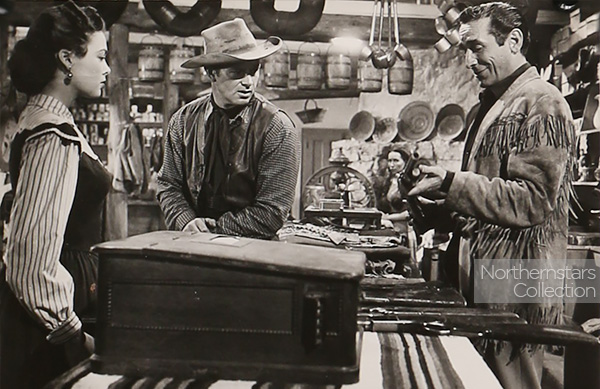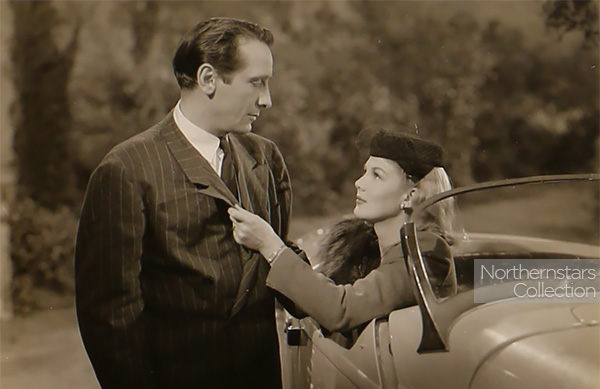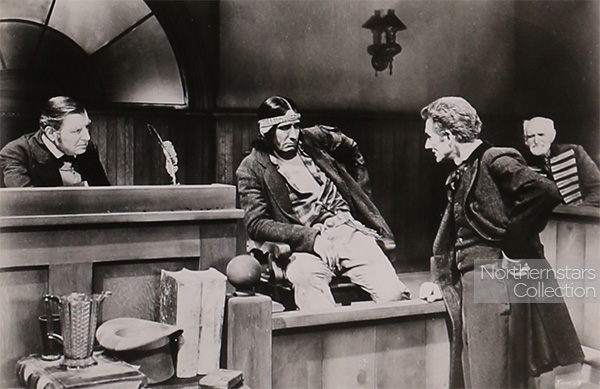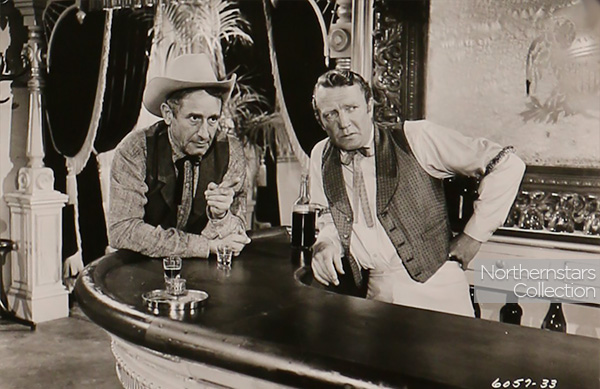Victor Jory – Biography
by Ralph Lucas – Publisher
(May 23, 2021 – Toronto, ON) The Yukon Territory, that part of Canada that butts up again Alaska and is famous for its brief history as a destination during the Gold Rush can also lay claim to producing one of Hollywood’s most enduring actors.
Victor Jory was born in 1902 in Dawson Creek almost immediately after the Gold Rush, which lasted from 1896 to 1899. Named for Dr. George Mercer Dawson, a Canadian government geologist, Dawson City, or more correctly the Town of the City of Dawson, was not much more than a trading post that sat on a spit of mud where the Klondike and Yukon Rivers meet. With the discovery of gold in 1896 and the “Stampede” a year later, population exploded to more than 50,000 people from all over the world.
It has been estimated that at the height of the rush, the number of people just passing through, on their way to hopefully find their fortune, ranged between 20,000 and 30,000, making Dawson Creek the largest Canadian town west of Winnipeg at the time. These days, the settled population has dwindled, although evaporated might be more accurate. According to the 2016 census, Dawson claimed 1,375 residents, up from 1,319 five years earlier.

As historic and picturesque as it might be, the town, located near a hill called Moosehide Slide, lies less than 322 km (200 miles) below the Arctic Circle, which may explain why Victor Jory ended up living under palm trees in California.
Jory spent his teen years in Pasadena and attended the University of California in Berkeley for a year before embarking on his stage career. His first stage work brought him back to Canada and to a stock company in Vancouver. He also appeared with stock companies in Salt Lake City, Denver, Cincinnati, Cleveland and Los Angeles, before arriving in New York in 1931, shortly after he had made his foray into film. He would return to Broadway in the 1940s. Examples of his work there include The Two Mrs. Carrolls, which ran from August 3, 1943 to February 3, 1945. He also wrote two plays that were produced on the New York stage, Bodies by Fisher and Five Who Were Mad. A member of the American Repertory Theater, he appeared in productions of Henry VIII and Androcles and the Lion, among others.
His deep clear voice also brought radio appearances in the time before live television dramas. For example he was “the primary hero” in 13 episodes of the radio drama series Dangerously Yours, about pirates, espionage, adventure and romance. Jory also narrated Tubby the Tuba and Bumpo the Ballerina for children. On radio’s Masterpiece Theater in the 1940s, Jory played such characters as Edgar Allan Poe and Sir Walter Raleigh. Elsa Maxwell remarked at the time that he was “the first radio star to link the spoken voice with sex appeal.” But it was his career in Hollywood that brought him international fame.

Not quite 30, young and handsome, Victor Jory was somewhat predictably cast in romantic roles early in his career. He also played Oberon in the 1935 film version of A Midsummer Night’s Dream and gave a performance described by The New York Times as “highly impressive.” But his shadowy eyes and strong demeanour led to him being cast in several highly memorable roles as the “heavy” or the “bad guy.” Classic examples include his role as the ruthless overseer Jonas Wilkerson in 1939’s Gone With the Wind, or his role as Lamont Cranston in The Shadow. Another highlight of his career from that era was his role as Injun Joe in The Adventures of Tom Sawyer (1938).

Westerns were common fare in the day and Jory appeared in 7 Hopalong Cassidy films between 1941 and 1943, usually cast as the villain or a right hand man. The only Hopalong film in which he did not play a ‘bad guy’ was in Riders of the Timberlane where he played a hot blooded, broad-shouldered lumberjack.

With the advent of television, part of his career moved to the small screen. He played the lead role of Detective Howard Finucane in the police drama series, Manhunt, which ran from 1959 to 1961. One year later he played Helen Keller’s father in the film, The Miracle Worker, for which his co-stars Patty Duke and Anne Bancroft won Oscars.
Victor Jory continued acting until he retired in 1980. He was married to Jean Inness Jory from 1928 until her death in 1978. Victor was 79 when he died of a heart attack on February 12, 1982 at his home in Santa Monica, California.
Also see: Victor Jory’s filmography.
![]() All of the images used in this biography were scanned from originals in the Northernstars Collection. This biography is Copyright © 2020 by Ralph Lucas and may not be reproduced without prior written permission. For more information about copyright, click here.
All of the images used in this biography were scanned from originals in the Northernstars Collection. This biography is Copyright © 2020 by Ralph Lucas and may not be reproduced without prior written permission. For more information about copyright, click here.


